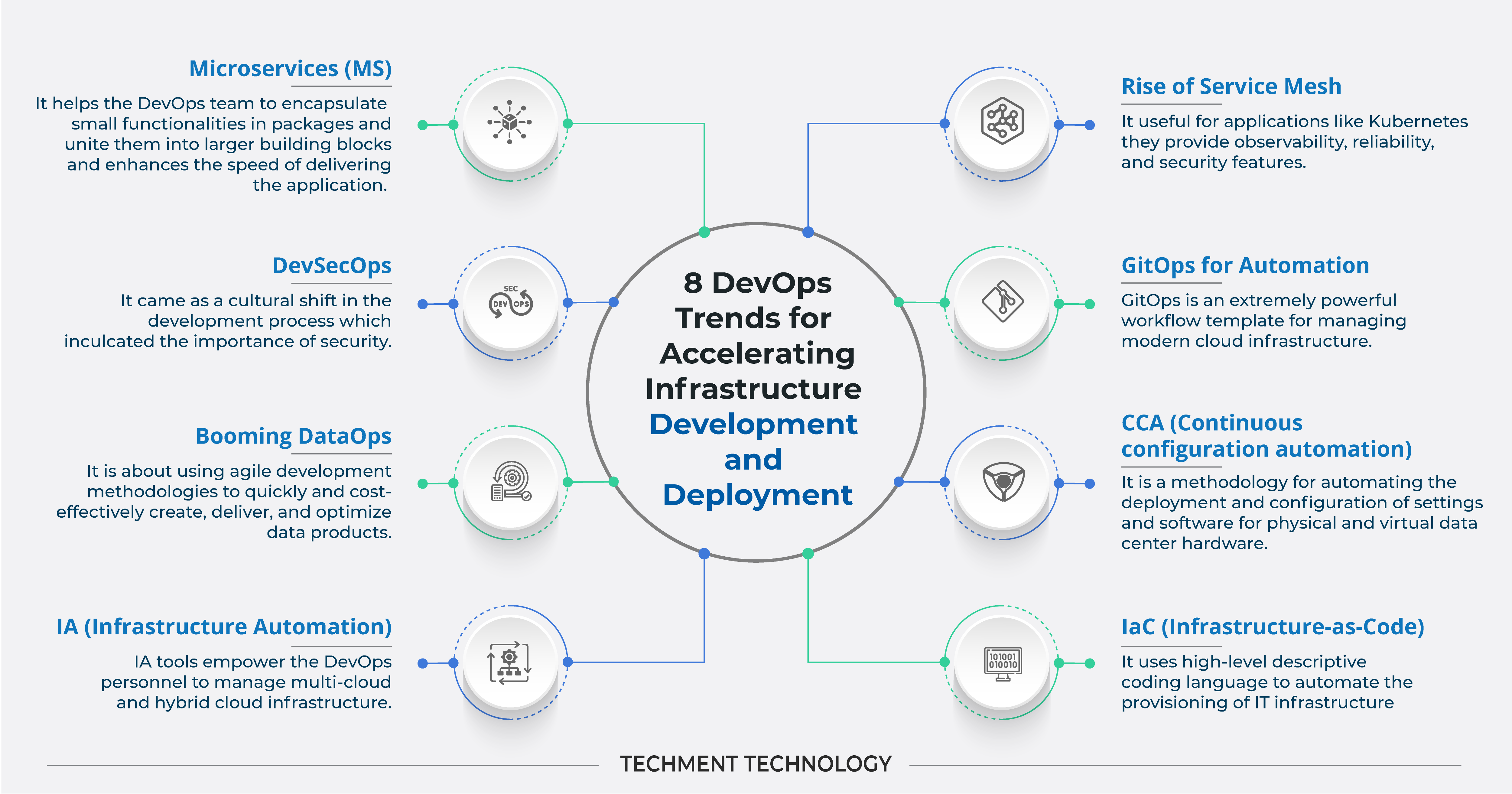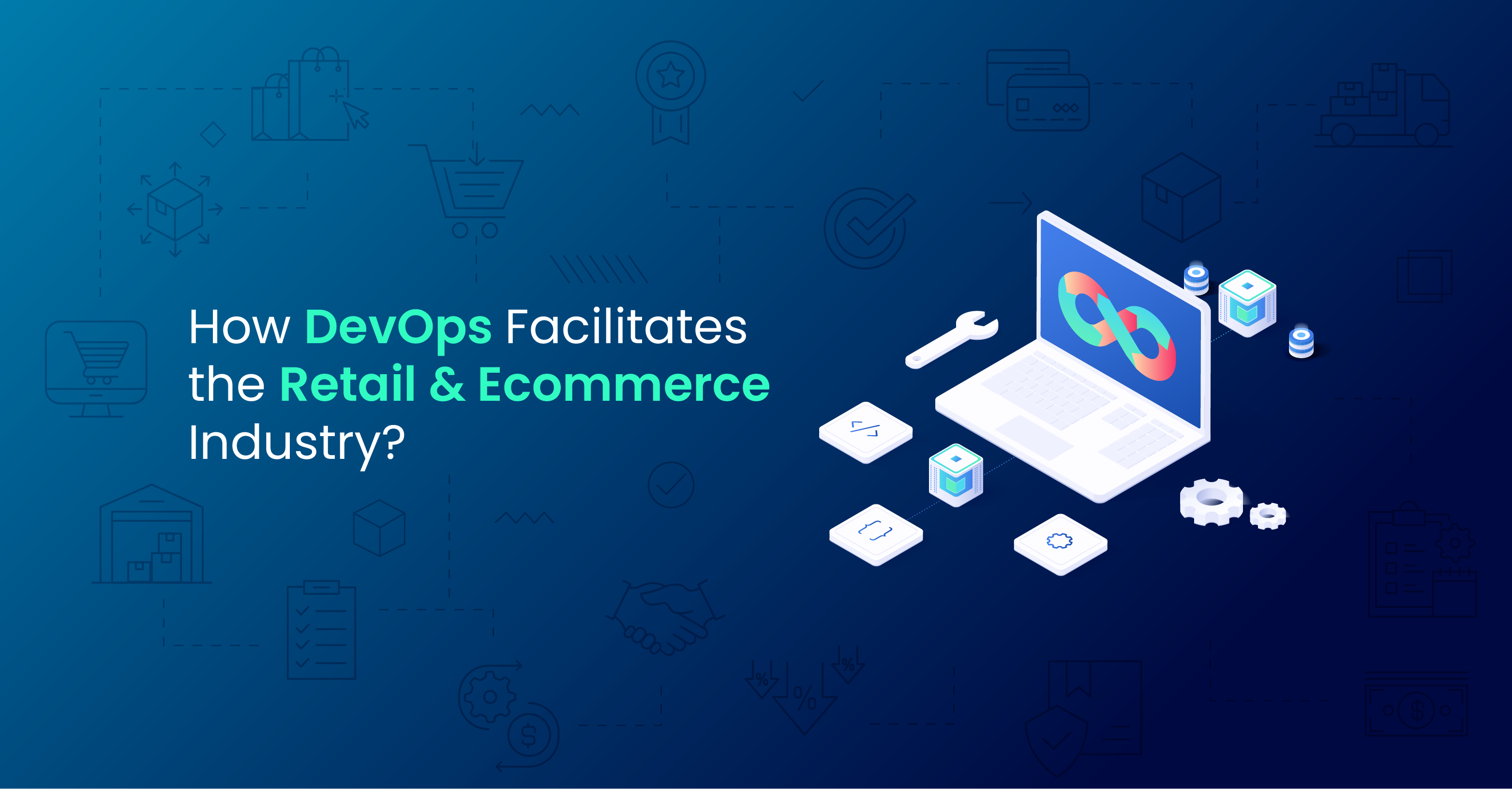Automation Will Pave The Path for New DevOps Practices
DevOps is at a mature stage since its inception in 2009 and represents the change in IT culture towards a more agile and system-centric approach. DevOps emphasized companies to improve collaboration between the operation team and the development team as earlier the development team prioritized releasing the application according to market demand in time and the operation team had to deploy and manage the software without coming across the development team.
DevOps, a compound of development (Dev) and operation (Ops), is a union of people, processes, and technology to coordinate and collaborate for producing better, more reliable products. DevOps practices and tools provide the ability to better respond to customer needs, increase the efficiency of products and achieve goals faster. It is an integral part of achieving goals faster like accelerating time-to-market and maintaining system stability and reliability.
The two main antecedents of DevOps are:
- ESM (Enterprise System Management): ESM is concerned with controlling, managing, and monitoring the management of IT infrastructures and applications through automation of monitoring tasks.
- Agile development: Agile methodology aims to deliver the right product by frequently delivering the small chunks of functionality where a self-organizing team coordinates with a cross-functional team. Agile became a mainstream method of developing software or applications, planning and managing in an iterative manner; anchored with delivering value to customers, building trust, and receiving regular feedback from customers.
New DevOps Trends are being adopted by developers especially the role of automation or automated integration of infrastructure is transforming the DevOps approach, and it will require a strong background in programming and scripting and also strong infrastructure management skills.
8 DevOps Trends for Accelerating Infrastructure Development and Deployment
With pandemic hitting the world, automation and digitalization were pushed more, invoking innovation and bridging the gap between companies and customer needs. The notion of remote work and distributed workforce forced DevOps engineers to come up with new practices for pushing ahead the technological advancements and avoiding stagnation. Knowing these new trends and incorporating them into your DevOps practice will help companies to stay afloat in a revolutionary arena.

- Microservices (MS): Microservices refer to architectural patterns where separate applications are allotted for differently deployable services. This architecture helps the DevOps team to encapsulate small functionalities in packages and unite them into larger building blocks. MS enhances the speed of delivering the application as it also uses CI/CD (Continuous Integration/ Continuous Delivery) like DevOps practice. MS enables the DevOps team to develop independent pieces of functionalities simultaneously. Instead of moving codes through different teams, cross-functional teams can work together for building, testing, and maintaining the applications.
- Rise of Service Mesh: Service mesh is a dedicated infrastructure layer built right into an application and controls how different parts of the application share data with one another. Especially useful for applications like Kubernetes they provide observability, reliability, and security features. It captures service-to-service communications (usually happens in microservice as different application layers are broken down) as performance metrics. Later this performance parameter is used to establish more reliable service requests. More than just scaling the application infrastructure it also allows DevOps teams the flexibility and autonomy they desire.
Hence, developers can focus more on adding business values, apps become more resilient to downtime, and the performance metrics can suggest ways to optimize communication in the runtime environment. - DevSecOps: More than just an improved development process enterprises wanted to bring the application to market without compromising security, so they started considering security as an integral part of designing. Hence, a step ahead, DevSecOps came as a cultural shift in the development process which inculcated the importance of security. DevSecOps tightly integrated infrastructure and app layers for controlling real-time troubleshooting for containers and microservices through continuous monitoring, assessment, and analysis. According to Verified Market Research, the Global DevSecOps Market is projected to reach USD 17.16 Billion by 2027, growing at a CAGR of 30.76% from 2020 to 2027.
- GitOps for Automation: Git repository becomes a single source of truth for defining, creating, and updating a company’s architecture. GitOps is an evolved form of DevOps as the former one comes with correctness in design and correctness in DevOps practices. GitOps is an extremely powerful workflow template for managing modern cloud infrastructure. While the DevOps community is primarily focused on managing the Kubernetes cluster, it adopts and publishes GitOps solutions for non-Kubernetes systems. GitOps can provide many benefits to development teams, including improved system connectivity, visibility, stability, and reliability.
GitOps can dramatically increase the productivity of the DevOps team by allowing them to quickly test new infrastructure configurations. If the new changes don’t work as expected, the team can use the Git history to roll back the changes to a known good state hence becoming highly adopting in DevOps practice. - Booming DataOps: Due to pandemics and work from home culture, the consumption of digital content has skyrocketed and now it demands a higher level of automation and scaling. DataOps is about using agile development methodologies to quickly and cost-effectively create, deliver, and optimize data products.
DataOps is a subset of AIOps and MLOps that aims to speed up processes and improve data quality and analytics covering all the work of retrieving, processing, cleaning, storing, and managing data. DevOps is the union of IT operations and engineering teams to reduce cost and time which is one level up in the software development and deployment cycle. Whereas DataOps is one level up in DevOps practice as it merges data team with DevOps team for acquiring data, transforming model and converting actionable insights from data. - CCA (Continuous configuration automation) : The need for automation has grown as IT teams struggle to tackle the delays of updates, patching, and resource delivery. So companies have seen an upsurge of CCA (Continuous configuration automation) to bring automation in delivery and configurations.
Continuous Configuration Automation is a methodology for automating the deployment and configuration of settings and software for physical and virtual data center hardware. CCA is often included in the DevOps toolchain which aids in the delivery & deployment of applications in DevOps practices, pushes to develop reliable software faster, and brings precision, efficiency and flexibility, and resolves the issues of application configuration management. - IA (Infrastructure Automation): IA tools empower the DevOps personnel to manage multi-cloud and hybrid cloud infrastructure. You need IA when there is slow provisioning i.e., slow response and turnaround time experienced by users. Hence, it is largely tooling for automatic provisioning, deployment, and testing of infrastructure in DevOps practices.
- IaC (Infrastructure-as-Code): IaC is a key DevOps practice that uses continuous delivery. It uses high-level descriptive coding language to automate the provisioning of IT infrastructure. Digitalization has caused enterprises to deploy hundreds of applications and it becomes highly essential to automate infrastructure, control cost, reduce risk and respond with speed. Here IaC comes to the rescue for developers to provide a competitive-paced software delivery lifecycle. IaC enables the DevOps team to make changes to environment description and versions of configuration models which are well-documented code formats and if the team wants to do changes, they can edit the source and not the target. Such benefits let the DevOps team deliver a stable environment for applications and scale them.
New devOps Practices Highlighting Need for Better Infrastructure
Greater use of technologies has simplified development, virtualization, and deployment to cope up with increasing complexity. The adoption in architecture development and deployment is also changing the way DevOps teams work. DevOps teams in many organizations are already adopting new practices for infrastructure management and automation for synchronization and cross-team collaboration.
Companies can often find it hard to switch towards automation when team members resist the change but bringing them to exposure to collaborative processes where data and insights support continuous improvement shall improve their working culture.
Management support is important not only in terms of processes and roadmaps but also in terms of the budget for retraining and refurbishment as needed. They also need to guide, communicate and collaborate with teams and set realistic benchmarks for measuring success at each stage. The value of transformation towards more automated and secure development processes also becomes evident once the team identifies the most problematic and common bottleneck. So this is the company and management must focus on supporting the team across different security tools and practices.
 All Posts
All Posts
